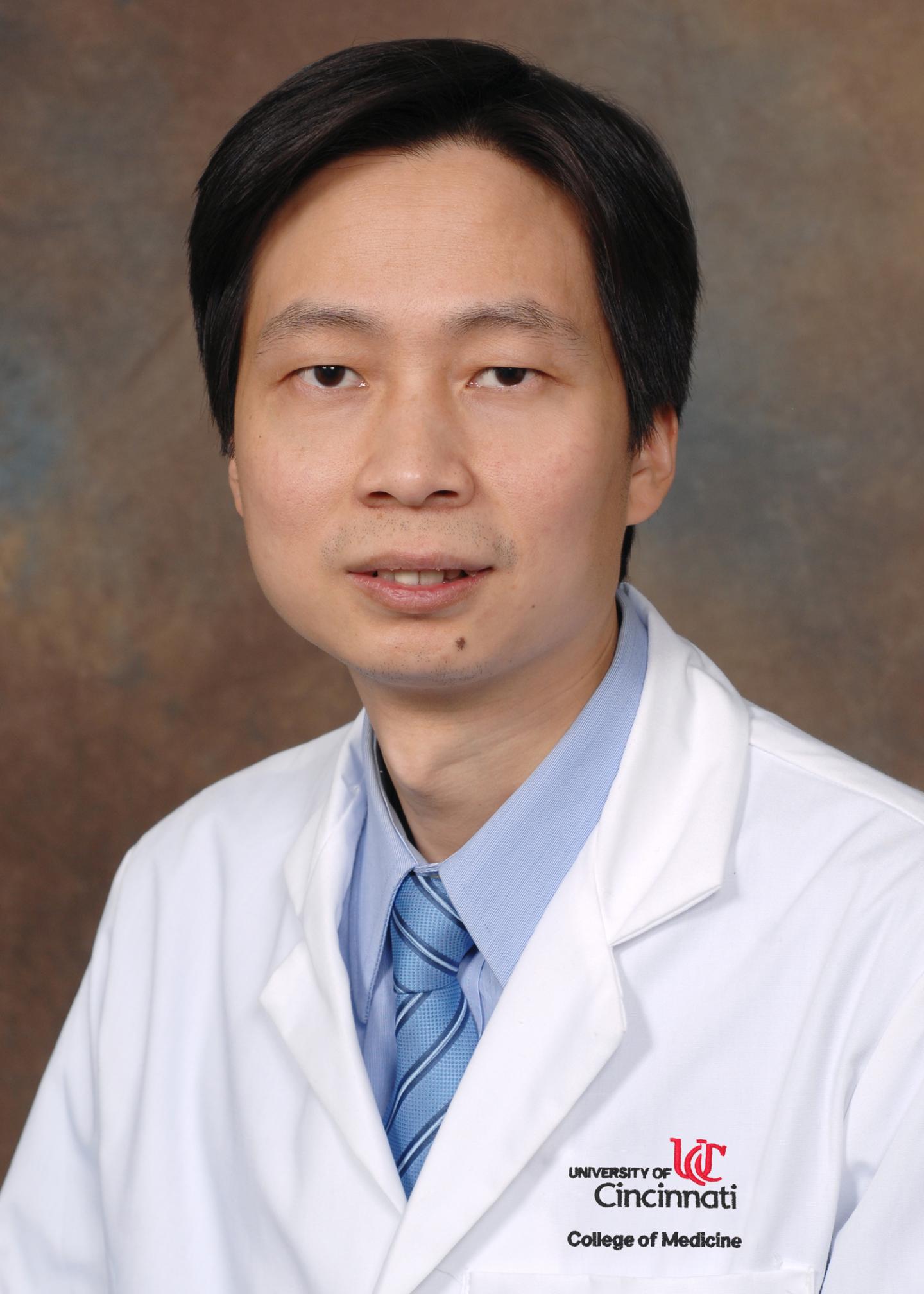UC researchers discover how two genes cooperate to cause cancer growth and can target treatments to stop it from happening

Credit: University of Cincinnati
Cooperation is generally a good thing — working together to reach a goal.
But in the case of cancer, it can be detrimental. University of Cincinnati researchers have discovered that cooperation between two key genes drive cancer growth, spread and treatment resistance in one particularly aggressive type of breast cancer.
The good news is, though, with this knowledge, they can continue to aim their targeted treatments at these genes, singularly and together, to stop breast cancer in its tracks.
This study is published in the March 9 online edition of the journal Cell Reports.
“According to the American Cancer Society’s estimate, over 280,000 new cases of invasive breast cancer will be diagnosed in women in 2021,” explains Xiaoting Zhang, PhD, professor and Thomas Boat Endowed Chair in UC’s Department of Cancer Biology, director of the Breast Cancer Research Program and member of the University of Cincinnati Cancer Center, who led this research. “Like many other cancers, breast cancer cells are fueled by mutations and overproduction of ‘driver’ genes, which lead the process of cancer development.”
He says one of these genes, called HER2 (human epidermal growth factor receptor 2), accounts for about 20% of all human breast cancer cases, and while there are some therapies to target it, unwanted side effects and treatment resistance often occur in patients, causing relapse.
“There are about a dozen additional genes, including one called MED1, located within the same chromosomal region where HER2 and other genes are multiplied in breast cancer, but it’s not known whether any of these genes are simply ‘passenger’ genes, and let HER2 to do the driving, or actually collaborate with the gene to play significant roles in the development, spread and treatment resistance of this type of breast cancer.”
To investigate this, the team created an animal model with an overproduction of both genes, HER2 and MED1, in the mammary gland.
This helped researchers discover the key role MED1 played in helping HER2 promote breast tumor growth, spread and treatment resistance. They found that the genes could in fact work with each other to further speed up their production and activities, which in turn promotes rapid cell multiplication, movement and invasion to spread cancer and cause treatment resistance.
Zhang adds that previous research has shown that MED1 has a role in treatment resistance in another type of breast cancer, ER+ (estrogen receptor positive). This UC study established MED1 as a key driver in the development and treatment resistance of two major kinds of breast cancer.
“Our findings suggest that targeting MED1, alone and in combination with current therapies, could be an effective treatment strategy for nearly 90% of breast cancer patients in clinics and combat treatment resistance to two widely used breast cancer therapies,” Zhang says.
Zhang and his team have already developed a treatment targeting MED1 specifically in tumors, using RNA nanotechnology similar to that used for the COVID-19 vaccines, and have observed positive outcomes. This technology is currently patent pending.
Creating foundations for future research, careers
Yongguang Yang, PhD, first author on this study and a research associate in Zhang’s lab, says the work he’s done on studying the roles of these genes in cancer and treatment resistance is eye-opening and takes a true “teamwork” approach.
“Working together as a team is very important in this process, as collaborations with the basic cancer biology researchers, clinical teams and physicians ensure our access to their unique insights and firsthand clinical experience, data and samples,” he says. “These findings are exciting and relate very closely to how this cancer impacts people. This new animal model we created has a wide range of future applications and will allow us to continue to study basic molecular mechanisms of this type of breast cancer to find and test new therapies.”
“It was very exciting to be able to not only conduct my graduate studies on something so innovative and impactful as identifying new ways that breast cancers function, but also to develop potential applications for the future of cancer treatment,” adds co-author, Marissa Leonard, PhD, a recent doctoral graduate of the cancer and cell biology program at UC. “One or the other is often seen in research labs, but doing both is something I would consider a rare opportunity.”
“The scientific experience, knowledge and writing skills I gained from Dr. Zhang’s lab and our graduate program at UC have greatly broadened my horizons and allowed me to familiarize myself with a wide range of scientific concepts,” says Leonard, who is now a medical writer. “These broad, laboratory-based skill sets bode well for many different career paths, too, whether that includes continued research, medical writing, regulatory science, patent law, teaching or others.”
###
Authors and collaborators of this study also include UC breast oncologists Elyse Lower, MD, and Mahmoud Charif, MD; pathologist Jiang Wang, MD, PhD; cancer biology researcher Jun-Lin Guan, PhD, and his lab members Syn Yeo, PhD, and Mingang Hao, PhD; Zhenhua Luo, PhD, of the Cincinnati Children’s Hospital Medical Center; and Gregory Bick, PhD, and Chunmiao Cai, PhD, from Zhang’s laboratory.
This research was supported by the National Cancer Institute (R01CA197865 and R01CA229869), Ohio Cancer Research Seed Grant, University of Cincinnati Cancer Center and Ride Cincinnati Awards. Researchers cite no conflict of interest.
Media Contact
Katie Pence
[email protected]
Original Source
http://www.
Related Journal Article
http://dx.



